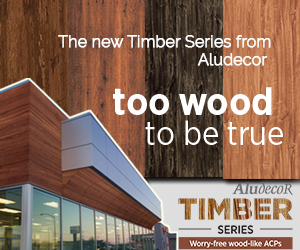Leadership in Energy and Environmental Design (LEED) is a third-party certification system developed by the U.S. Green Building Council (USGBC). Over countless years the management of buildings and the construction of new buildings have had a negative impact on the environment. Because of this, Architects and building owners alike are now looking to LEED to help them retrofit and construct buildings and communities that are more environmentally aware.
The LEED certification program assesses the design and construction of buildings in terms of energy usage, water use, air quality and use of building materials as well as environmental factors such as access to public transport and responsible land use.
Why should you certify with LEED?
The LEED certification program is the world’s leading sustainable building design and construction programme. Getting a LEED certification demonstrates environmentally responsible construction practices. It can be a major boost to the reputation of both the owner of a building and a contractor who designs and/or installs LEED-certified buildings. A record of projects certified by LEED will allow a builder to be recognized as a pioneer in the construction sector. LEED certification will carry significant concrete benefits, beyond public relations.
LEED certification can help homes sell faster and for a higher price for residential construction firms. Homebuilders are often able to get tax credits to build LEED-certified homes.
Construction companies can also advertise prospective homeowners that a LEED-certified house can lower their insurance premiums and that their home values that increase over time compared to similar, non-LEED-certified homes in the same area.
What does a LEED certification do?
LEED certification helps to identify how much a building really is environmentally friendly and sustainable. LEED takes into account such factors as:
- Water Efficiency,
- Energy Efficiency,
- CO2 Emissions Reductions,
- Indoor Environmental Quality
and more to assess if, and at what point, the building is worthy of LEED certification. LEED is one of many third-party verification services but is one of the strongest.
Read also: Building Energy Efficient Buildings
How does it work?
LEED certifies all types of buildings, from the corporate headquarters to small homes. Certification also includes all planning stages, from design and construction to operations and maintenance, to major retrofits. LEED scores many areas which address sustainability issues. The cumulative number of points earned by a project translates into one of four ranking levels for LEED certification. These are Certified, Silver, Gold, Platinum standards.
LEED awards points in categories as follows:
- Location and Transportation
- Sustainable Sites
- Water Efficiency
- Energy and Atmosphere
- Materials and Resources
- Indoor Environmental Quality
- Innovation
- Regional Priority
Read also: Aludecor Systems – The Pioneer of Heat Insulation and Green Building Practices


Since all types of projects are different, the LEED rates different types of projects differently. The types of projects which they score include:
Urban design and construction – Include new construction, classrooms, shops, data centres, warehouses, distribution centres, hospitality and healthcare.
Interior Design and Development – Includes entire interior fit-out programs, such as industrial interiors, retail interiors, and hospitality.
Building Operations and Maintenance – Includes buildings such as existing data cores, warehouses, distribution cores, hospitality facilities, retail buildings, and schools for existing buildings that are being retrofitted with very little construction work.
Neighbourhood and Development – For both new land development and renovation projects that include residential or non-residential uses–or a combination of both–from planning to construction, at all stages of development.
Houses – It covers both single-family homes, multi-family low-rise homes and multi-family mid-rise homes.
Read also: Biowonder Celebrates the Spirit of Lush Greenery and Biophilia
As a responsible organisation, Aludecor is committed towards the green methods. The impure water discharged during the manufacturing process of the products is treated by its ETP Plant. Only contamination-free water is discharged to the Sidcul drainage for further cleaning.
Aludecor received several green certificates and awards from Indian Green Building Council (IGBC), India 5000 Best MSME and ET Now because of their commitment to environmental-friendly construction practices such as using recyclable polyethylene and aluminium coil; lead-free paint; and coil coating for manufacturing its Aluminium Composite Panels. The company also manufactures the very environment-friendly Copper Composite Panels and Zinc Composite Panels.




